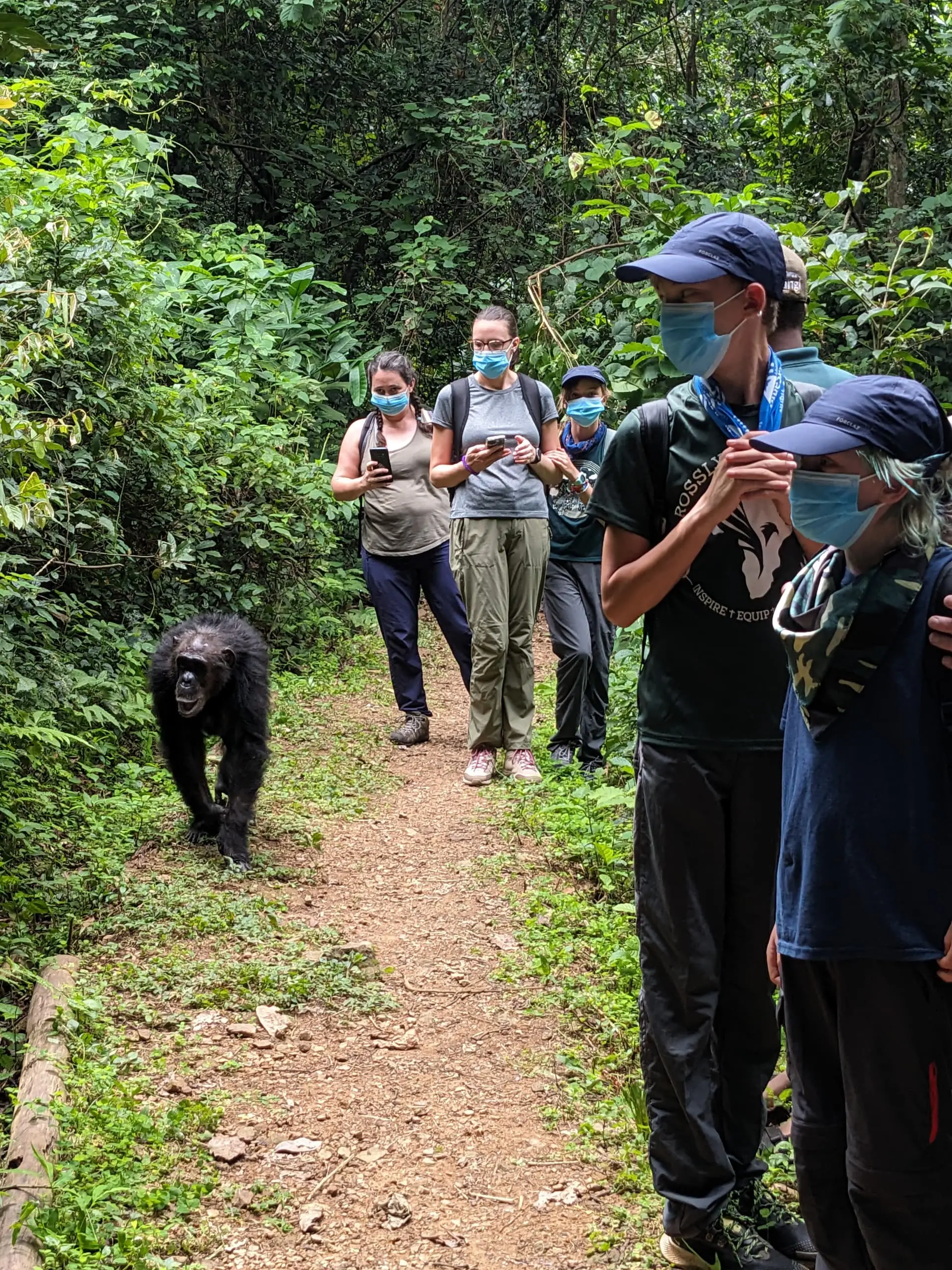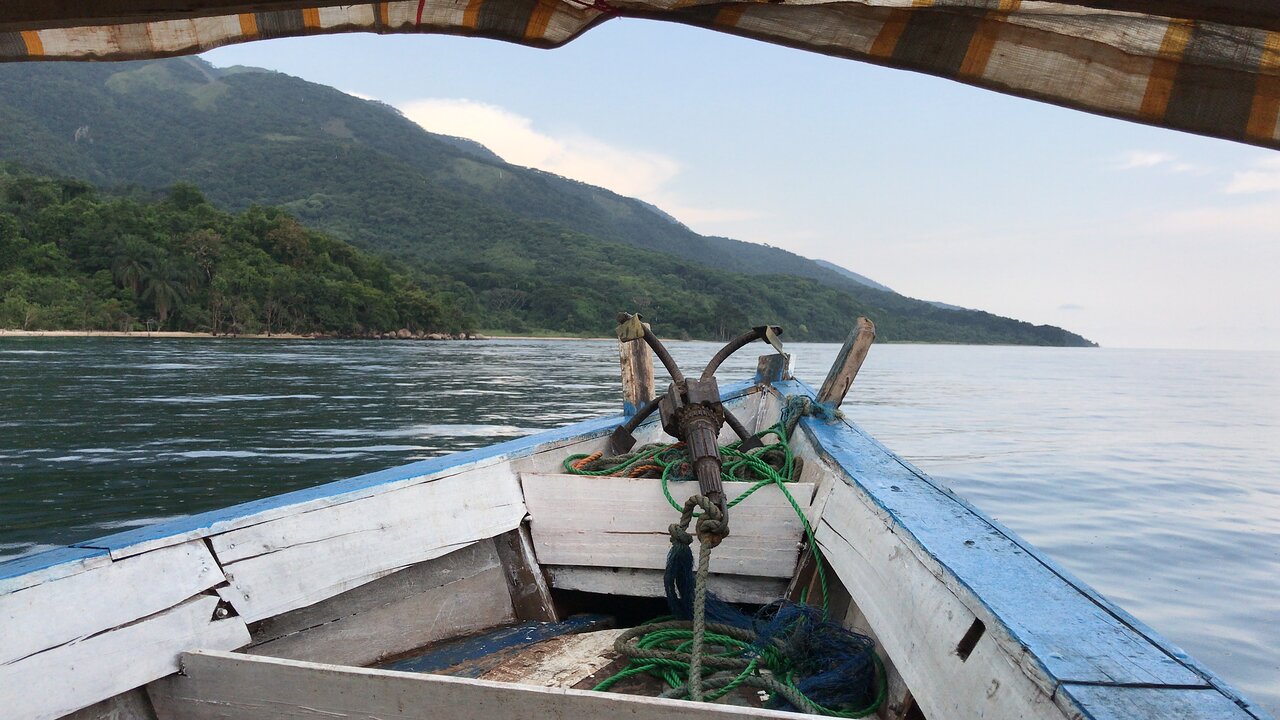Chimpanzee Tracking at Gombe Stream National Park
Nestled on the remote shores of Lake Tanganyika in western Tanzania lies one of the most extraordinary wildlife destinations in Africa — Gombe Stream National Park. Though small in size (just 52 square kilometers), Gombe holds monumental significance in the world of primatology and conservation. This forested haven became globally renowned through the groundbreaking research of Dr. Jane Goodall, who arrived in 1960 and transformed the way we understand not only chimpanzees but ourselves.
Today, chimpanzee tracking at Gombe offers travelers a rare and deeply moving opportunity: to walk in the footsteps of wild chimpanzees in their natural habitat, observe their social behaviors, and connect with nature at its most raw and intimate. This article explores the experience of chimpanzee tracking at Gombe — from its historical roots to the practicalities of a visit, and the profound emotional impact it leaves on those who make the journey.
The Legacy of Jane Goodall and the Gombe Chimpanzees
The story of Gombe cannot be told without honoring the legacy of Jane Goodall, whose pioneering work began when she set up camp here under the mentorship of famed anthropologist Louis Leakey. At just 26 years old, with no formal scientific training, Goodall’s intuitive and patient approach to studying chimpanzees revolutionized primate research.
Her most famous discovery — that chimpanzees use tools to fish termites from their mounds — shattered the long-held belief that tool-making was a uniquely human trait. Over time, she documented a complex tapestry of chimpanzee society: strong family bonds, territorial disputes, hierarchical power struggles, and emotional intelligence. Thanks to her work, Gombe became one of the most thoroughly studied primate populations in the world, and a symbol of conservation awareness.
Today, the Gombe chimpanzee community remains habituated to human presence, making tracking possible and insightful without causing disruption to their natural lives.
The Chimpanzee Tracking Experience
What to Expect on a Chimp Trek
Chimpanzee tracking at Gombe is an immersive, physically demanding, and highly rewarding experience. It typically starts early in the morning, as this is when chimpanzees are most active. Accompanied by experienced park rangers and local guides, trekkers set off on foot into the dense forest, often guided by the sound of hoots, drumming, and calls echoing through the canopy.
The trek can take anywhere from 30 minutes to several hours, depending on the location of the chimpanzees that day. Gombe is hilly, and the trails can be steep, muddy, and slippery — so a reasonable level of fitness is required. However, the moment you lock eyes with a wild chimpanzee — intelligent, curious, and eerily human — every step becomes worth it.
Observing the Chimps
Once the chimpanzees are located, visitors are allowed to spend one magical hour observing them. You may witness a mother grooming her offspring, adolescent males playing or chasing each other, or an alpha male asserting dominance through dramatic displays. The closeness of the interaction, often just a few meters away, makes for an emotional experience — a mirror into our evolutionary past.
Guides help interpret the chimps’ behaviors, offering fascinating insights into their social structure and personalities. Because the chimps are used to human observers, they usually go about their day unfazed, offering a truly authentic glimpse into their lives.
Beyond Chimps: Gombe’s Biodiversity
While chimpanzees are the stars of the show, Gombe is also a biodiverse hotspot. The park is home to olive baboons, red-tailed monkeys, vervet monkeys, and blue monkeys, all of which can be seen during a trek. It is also a haven for birdwatchers, with over 200 species of birds, including fish eagles, trumpeter hornbills, and the iconic African paradise flycatcher.
The forest trails wind past waterfalls, lush valleys, and ridge-top vistas that offer panoramic views of Lake Tanganyika — the second-deepest freshwater lake in the world. The lake itself provides opportunities for snorkeling, kayaking, and fishing, with vibrant cichlid fish and crystal-clear waters perfect for relaxing after a trek.
Practical Information for Visitors
Getting There
Gombe’s remote location means that getting there requires some planning. Most visitors fly from Dar es Salaam or Arusha to Kigoma Airport. From Kigoma, it’s a 2-hour boat ride across Lake Tanganyika to Gombe. This isolation is part of Gombe’s charm — it keeps visitor numbers low and the experience intimate.

Accommodation
Accommodation options are limited but charming. The Gombe Forest Lodge, set amidst the forest and lake, offers comfortable tented chalets with en-suite bathrooms and stunning views. There are also TANAPA-operated guesthouses and campsites for budget-conscious travelers or researchers.
Best Time to Visit
Gombe is open year-round, but the best time for chimpanzee tracking is during the dry season from June to October, when the trails are more accessible and the chimps are easier to find. During the wet season (November to April), the forest is lush and vibrant, but trekking becomes more challenging, and sightings can be less predictable.
Permits and Costs
A chimpanzee tracking permit is required and can be arranged through tour operators or directly with the Tanzania National Parks Authority (TANAPA). As of 2025, permits typically cost around $100 to $120 per person, not including park entry fees or guide costs. It’s advisable to book in advance, especially during peak travel months.

Conservation and Challenges
Despite its fame, Gombe’s chimpanzees face threats. Habitat loss due to deforestation, disease transmission, and human-wildlife conflict continue to pose risks. However, the Jane Goodall Institute and local conservation efforts have made strides in mitigating these challenges through community-based conservation, education, and research initiatives.
Tourism plays a vital role in supporting conservation at Gombe. Revenue from permits and park fees helps fund protection measures, while responsible travel raises awareness about the fragile balance of this unique ecosystem.
In Summary
Chimpanzee tracking at Gombe Stream National Park is not just a wildlife activity — it is a pilgrimage into the heart of nature and human origins. Few places in the world offer such a raw, emotional, and transformative encounter with our closest relatives in the animal kingdom.
Whether you’re a primatology enthusiast, a nature lover, or simply someone seeking a once-in-a-lifetime adventure, Gombe delivers an experience that lingers long after you’ve left its emerald slopes and shimmering shores. It’s a journey that connects you not only to the wild but to a deeper understanding of our shared place in the story of life.
